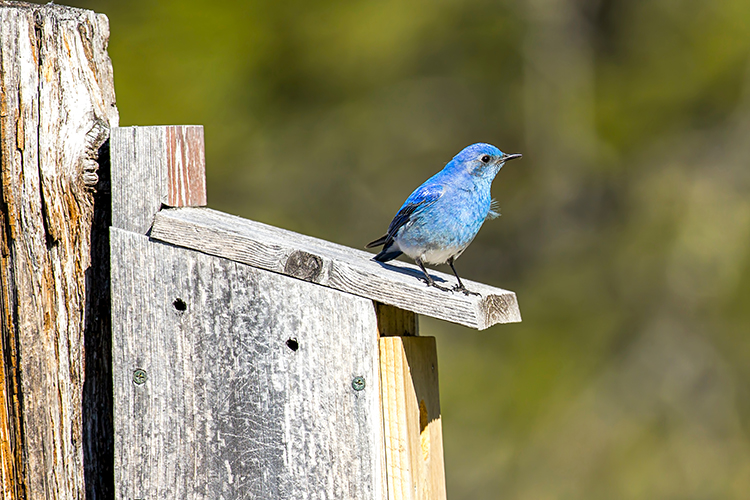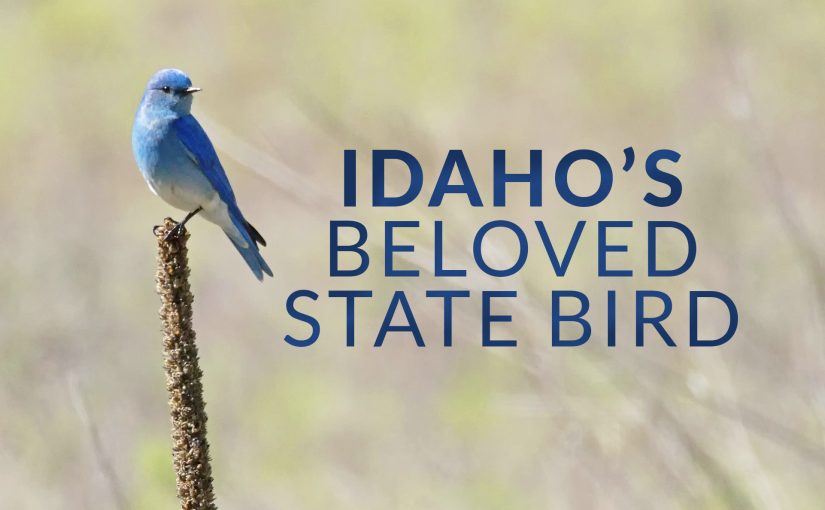Flitting through the skies with a flash of vibrant blue feathers, Idaho’s state bird is truly a sight to behold. Known for its cheerful song and striking appearance, the mountain bluebird has captured the hearts of nature enthusiasts and locals alike. But what exactly makes this feathered friend so special?
The Mountain Bluebird
Idaho’s state bird is the Mountain Bluebird, a beautiful species of bird known for its striking blue plumage. The Mountain Bluebird is found in mountainous regions across North America, and has been a symbol of Idaho since the early 20th century. Today, the Mountain Bluebird is still revered by Idahoans, and its populations are monitored closely by state wildlife officials.
Mountain bluebirds are small thrush-like birds that measure about 7 inches in length. They have long wings and tails, and their plumage is mostly blue, with some white on their undersides. The males are more brightly colored than the females, with deep blue feathers that seem almost iridescent in the sunlight.
Mountain bluebirds typically nest in cavities in trees or cliffs, and will often use old nests abandoned by other birds. They usually lay between 4 and 6 eggs per clutch, which hatch after about two weeks. The young birds fledge at around three weeks old and are able to fly well at four weeks old.
Mountain bluebirds are not migratory birds, but they may move to lower elevations in winter if conditions are too harsh higher up. In Idaho, mountain bluebirds can be found in forests, meadows, and even desert areas near mountains. They primarily eat insects, although they will also eat berries on occasion.
The Significance & Impact the Mountain Bluebird Has Made on Idaho
The mountain bluebird has a number of environmental benefits. The bird helps to control insect populations, which can be detrimental to crops and other plants. The bird also disperses seeds, which helps to regenerate forests. In addition, the mountain bluebird’s nesting habits help to aerate soil and promote growth of plants.
The mountain bluebird also holds cultural significance for Idahoans. The bird is often seen as a symbol of hope and rebirth, due to its habit of nesting in old trees that have been burned by forest fires. The mountain bluebird is also a popular subject of poems and songs, and is featured on many pieces of artwork.
Conservation Efforts for the Mountain Bluebird
There are many ways that we can help conserve the mountain bluebird. One way is to protect and restore their habitat. This can be done by reducing human disturbance in nesting areas, protecting nesting sites from invasive species, and managing fire regimes. Another way to help conserve them is through nest box programs. By providing nest boxes, we can provide homes for mountain bluebirds and other Aridland birds. We can also help by monitoring populations and conducting research to learn more about these special birds.

Conclusion
The mountain bluebird is truly an inspiring species of bird that can brighten up even the dullest days and remind us of Idaho’s natural beauty. It is a symbol for hope due to its resilience, strength, and adaptability. Whether you’re out hiking in our beautiful mountains or just admiring your backyard birds, we encourage you to look for the majestic mountain bluebirds as they fly over Idaho. So, stand back and take delight in these special birds who have become a beloved part of our state and community.
